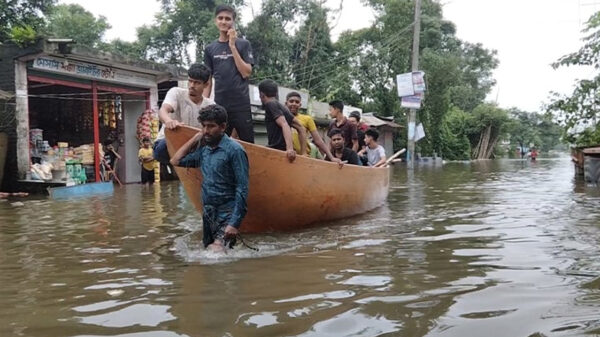Sadman Rafid: A large number of Bangladeshi people are claiming that, opening the Dumboor Dam gate is the responsible for floods in Feni District. They widely shared the incident on social media, specially on Facebook. However, there is no connection between Dumboor Dam and Feni river.
There’s been some confusion about whether the recent flooding in Feni was caused by the opening of the Dumboor Dam. However, it’s important to clarify that this is not the case. You will get detailed information through this article.
Where is the Dumboor Dam?
The Dumboor Dam is located on the Gomti River in Tripura, India. When the dam’s gates are opened, the water flows through the Gomti River, entering Bangladesh through areas like Debidwar, Muradnagar, and Daudkandi in Comilla, eventually merging with the Meghna River.
No Connection with Feni River
The Feni River and the Muhuri River in Feni have no connection with the Gomti River. This means that opening the Dambur Dam does not directly impact the flood situation in Feni.
So, what is the reason for Feni floods?
The floods in Feni are primarily due to a low-pressure system that formed in the Bay of Bengal, which has moved inland, bringing heavy rainfall to the southern and eastern regions of Bangladesh, as well as Tripura in India.
According to data from Bangladesh’s Flood Forecasting and Warning Center, on August 19th, Feni’s Parshuram recorded 304 millimeters of rain, Khagrachari’s Ramgarh recorded 145 millimeters, Noakhali had 154 millimeters, Comilla recorded 210 millimeters, Moulvibazar’s Kulaura recorded 238 millimeters, and Kamalganj had 163 millimeters of rainfall.
In addition, Tripura’s Meteorological Department recorded 375 millimeters of rain in Bagafa, 324 millimeters in Belonia, and 307 millimeters in Amarpur in Tripura’s Gomti district on August 19th.
This heavy rainfall has persisted and is expected to continue today and tomorrow. As of this morning, Tripura has experienced 60 hours of nonstop rain, causing flooding in Tripura and resulting in the flow of floodwater into Bangladesh through its rivers.
In Feni, continuous heavy rainfall combined with hill torrents has caused the Muhuri and Feni rivers to rise, leading to flooding. The water level in the Dakatia River in Comilla’s Chauddagram has also risen, causing the area to flood, though this flooding is due to waterlogging rather than hill torrents. Similarly, Noakhali is experiencing flooding due to heavy rainfall, as filled-up canals and rivers have prevented proper water drainage, leading to waterlogging.
In the north, the rivers Sonai, Dholai, Khwai, and Manu have crossed danger levels, affecting the districts of Habiganj and Moulvibazar in the Sylhet Division. In Comilla, the water level of the Gomti River continues to rise, but it has not yet crossed the danger level, though surrounding floodplains have been affected.
In summary, the current flooding in Feni is due to heavy rainfall and hill torrents, not the opening of the Dumboor Dam. The dam’s water flows into the Meghna River through a different river system, which does not affect Feni.

